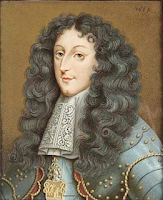Pietro Bracci - sculptor
Artist best known for Oceanus statue at Trevi Fountain
The sculptor Pietro Bracci, who left his mark on the architectural landscape of Rome with the colossal six-metre high statue Oceanus that towers over the Trevi Fountain, was born on this day in 1700 in Rome. The monumental figure is shown standing on a chariot, in the form of a shell, pulled by two winged horses flanked by two tritons. Bracci worked from sketches by Giovanni Battista Maini, who died before he could execute the project. He also completed work on the fountain itself, built in front of Luigi Vanvitelli’s Palazzo Poli. This was started by Bracci’s close friend Nicola Salvi, who had been commissioned by Pope Clement XII to realize plans drawn up by Gian Lorenzo Bernini that had been shelved in the previous century. Salvi died in 1751, before he could complete the work. Giuseppe Pannini was also involved for a while before Bracci took over in 1761. The work confirmed Bracci as a major talent of his time in the field of sculpture, one of the greatest of the late Baroque period, continuing in the tradition established by Bernini in the previous century that gave the city of Rome so many wonderful monuments. Read more...
_________________________________________________________________
Giacomo Agostini - world motorcycle champion
Lovere legend clocked up 122 Grand Prix wins
Giacomo Agostini, 15 times Grand Prix world motorcycling champion, was born on this day in 1942 in Brescia. Agostini moved with his family to the lakeside town of Lovere when he was 13. In 2016, his career was commemorated with a month-long exhibition at the Accademia Tadini, which overlooks the picturesque Lago d'Iseo. The exhibition marked the 50th anniversary of Agostini's first world championship in 1966. Riding for the Italian MV Agusta team, Agostini won the 500cc class seven times in a row from 1966 to 1972 and the 350cc class seven times in succession from 1968 to 1974, adding a further 500cc title on a Yamaha in 1975. His total of 122 Grand Prix wins from 1965 to 1976 is the highest by any rider in the history of the sport, although his fellow Italian, Valentino Rossi, is now not far behind on 115. Agostini, considered perhaps the greatest motorcycle racer of all time, was at the peak of his powers between 1967 and 1970. Between 1968 and 1970, he won every race in which he competed in 350cc and 500cc classes, equalling Mike Hailwood's record for most wins in a single year in 1970 when he was first in 19 races. Read more…
__________________________________________________________________
Mario Rigoni Stern – author
Brave soldier became a bestselling novelist
The novelist Mario Rigoni Stern, who was a veteran of World War II, died on this day in 2008 in Asiago in the Veneto region. His first novel, Il sergente della neve - The Sergeant in the snow - was published in 1953. It drew upon his experiences as a sergeant major in the Alpine corps during the disastrous retreat from Russia in the Second World War. It became a best seller and was translated into English and Spanish. Rigoni Stern had been a sergeant commanding a platoon in Mussolini’s army in the Soviet Union during the retreat of the Italians in the winter of 1942. His book was inspired by how he succeeded in leading 70 survivors on foot from the Ukraine into what was then White Russia - now part of Belarus - and back to Italy. In 1953 he sent the manuscript of his book to the Einaudi publishing house. They agreed to publish it but said they didn’t think he had a future as a writer. They were proved wrong. One of more than a dozen novels and collections of short stories he would go on to publish, it won the Viareggio Prize for best debut novel and went on to sell more than a million copies. Read more…
Home



















